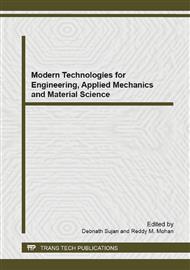p.198
p.203
p.208
p.214
p.219
p.225
p.230
p.237
p.243
New Model for Knock Factors Optimization in Internal Combustion Engine (SI)
Abstract:
The main goal of this paper is to construct a new mathematical model and study the behavior of the factors affecting the problem of knocking in internal combustion engines. Curve fitting technique was used in construction of the model, and also Akaike Information Criterion (AIC) was used as a test in choosing the best model. Factors affecting the problem of knocking have been identified through the use of test engine had promised to do so. The mathematical model was built through real data under certain conditions. Three influential factors (Temp., TPS and RPM) have been taken into consideration. Curve fitting models were used in achieving the goal and then studied the effect of one of the factors in the problem of knocking was investigated. Results obtained through the application of the new model is a low level knocking with increasing temperature (Temp) at the same points in Throttle (TPS), the Revolution Per Minute (RPM), which shows the effectiveness of the new model with non-linear behavior of the factors affecting the knock.
Info:
Periodical:
Pages:
219-224
Citation:
Online since:
June 2014
Price:
Сopyright:
© 2014 Trans Tech Publications Ltd. All Rights Reserved
Share:
Citation:


